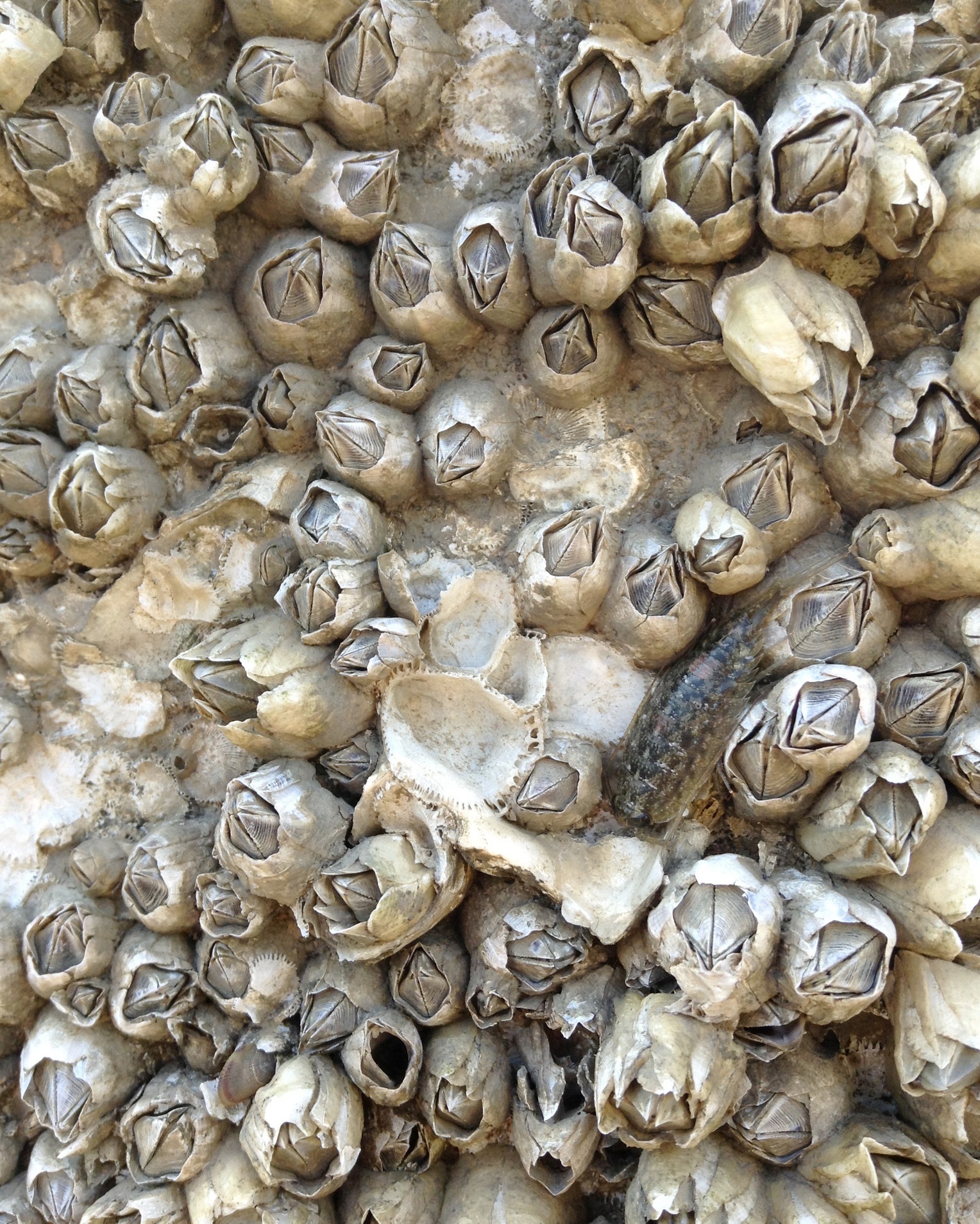
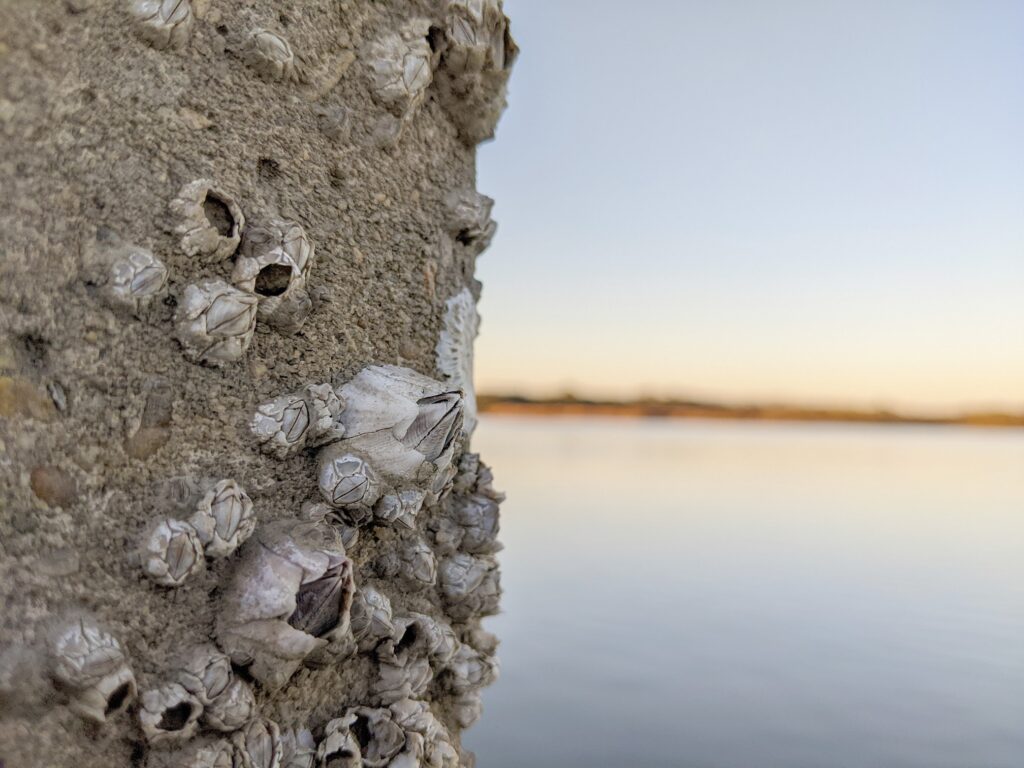
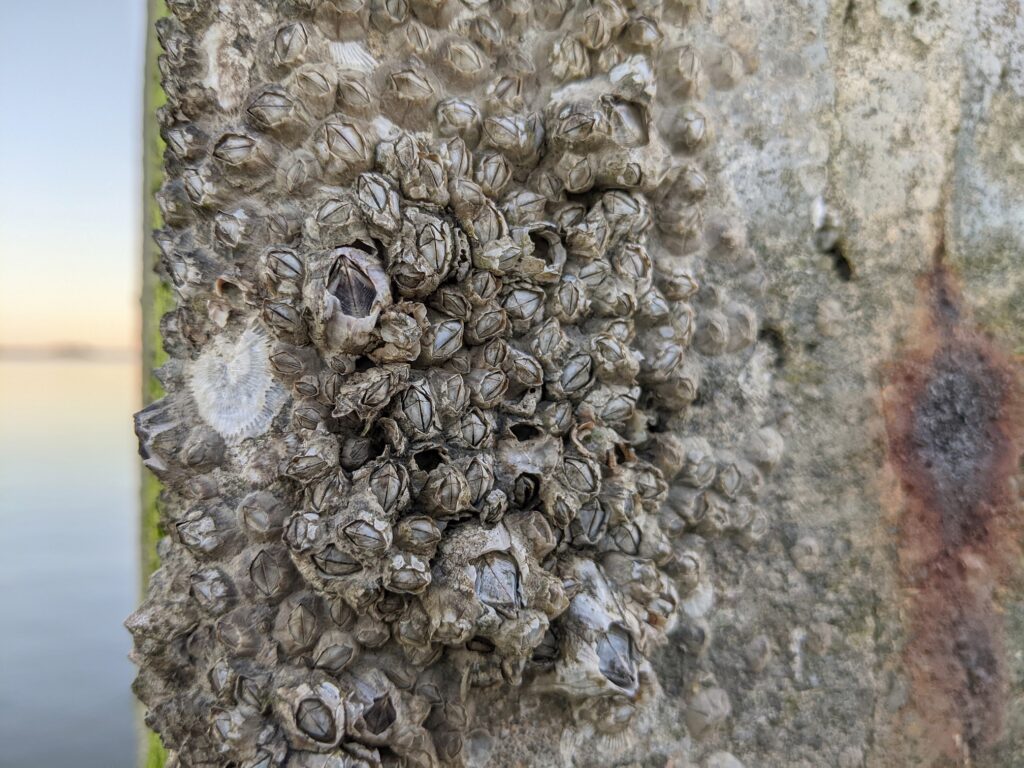
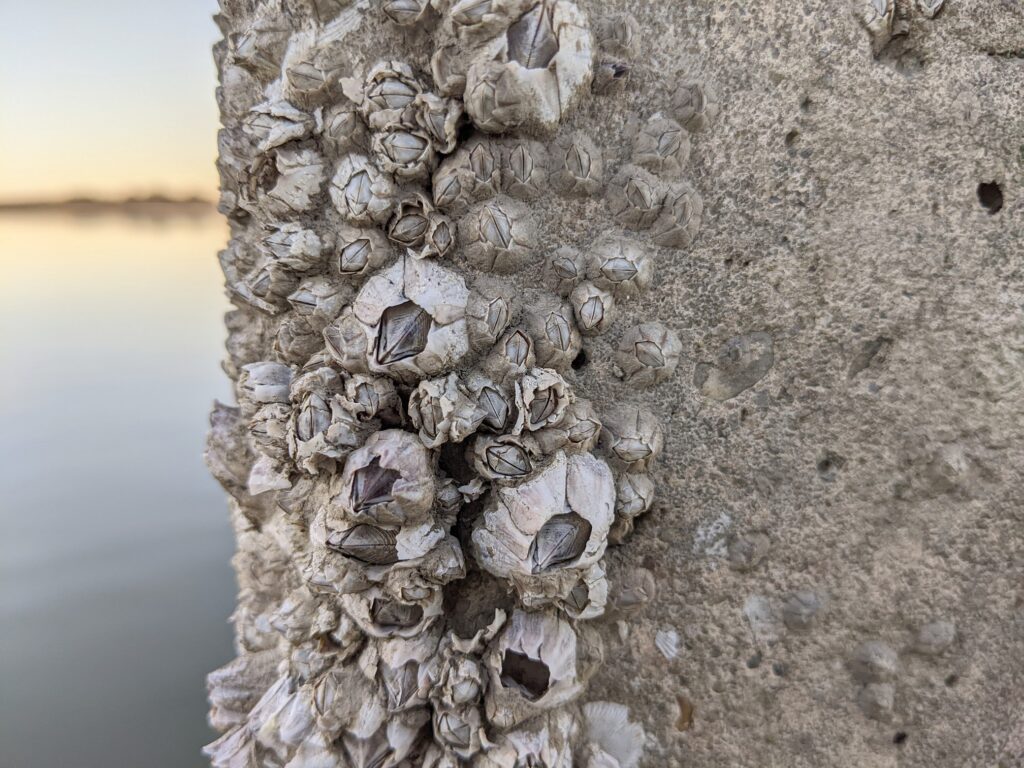
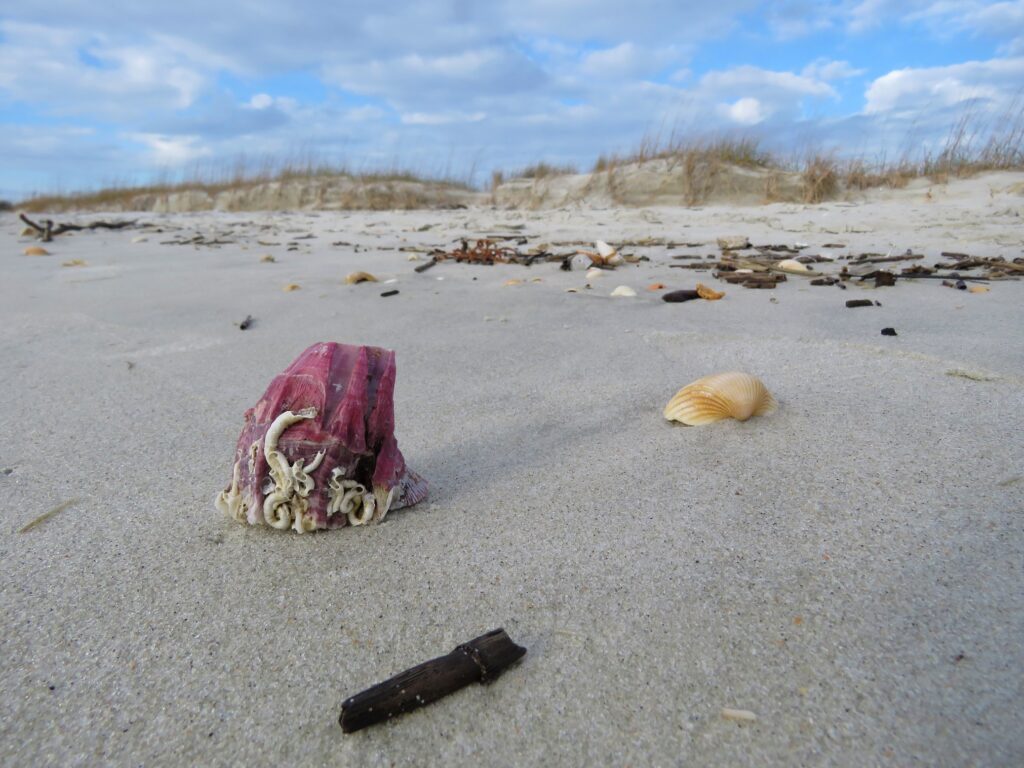
This week for Flora and Fauna Friday we have a clade of clingy calcareous crustaceans, Acorn Barnacles (Subclass Cirripedia, clade Sessilia).
You read me right, Barnacles are crustaceans and not mollusks. They belong to the same clade as crabs, shrimp, and crayfish. Life as a listless lump requires some lifestyle changes from the typical crustacean we know. Barnacles are sessile organisms, meaning they can’t relocate once they attach to a surface. Thus they are generally filter feeders and get their meals by straining seawater through a pair of feathery appendages. There are many species of barnacle of a myriad of shapes with a wide array of lifestyles but most fall within two major groups. Acorn Barnacles are the conical-shaped hard-shelled creatures we’re used to seeing here in the Lowcountry. However there are also Stalked Barnacles who grow off of a surface by means of a muscular stalk, but you’ll likely only ever see them washed ashore on driftwood in South Carolina. Acorn Barnacles are surrounded by a phalanx of interlocking plates of calcium carbonate. As they grow, these plates grow with them. At the top of this pyramidal shell is an angled pair of interlocking plates. These plates are hinged lengthwise to allow the barnacle to close up on command and protect their soft barnacle bits within. Below it all is a base plate that grows directly onto their selected substrate, firmly anchoring them in place. Acorn Barnacles can attach and grow on just about anything from rocks to wood to crabs to oysters to whales to boats to ropes and even to each other.
Here around Edisto you’re most likely to see Acorn Barnacles from a select few species. These species are adapted to life in the intertidal zone and thus are the easiest for us to observe since they appear above water twice a day. The three species I’ve seen most often glued to piers and pylons in our tidal creeks are the Ivory Barnacle (Amphibalanus eburneus), the Striped Barnacle (Balanus amphitrite), and the Fragile Barnacle (Chthamalus fragilis). The Ivory and Striped Barnacle are a similar conical shape and the same size at about half to three-quarters of an inch around. The Ivory Barnacle is a pure ivory-white and prefers to grow just below the low tide line but can often be seen on exceptionally low tides. The Striped Barnacle has many vertical mauve stripes and tolerates being out of the water better than the Ivory Barnacle, so you’ll often see it growing several feet above the low tide line. The Striped Barnacle is a native of the Indian Ocean and has been established in South Carolina for over a hundred years. It’s the one that’s probably the easiest to find. The Fragile Barnacle is much smaller in size than the other two, usually less than a quarter inch across. It’s flatter and can sometimes have an irregularly shaped border to its base. They tolerate exposure to air the best and will often be the barnacle growing the farthest up a structure. Fragile Barnacles will even grow on the stalks and leaves of Smooth Cordgrass. There is a fourth hard to miss species of Acorn Barnacle that is a recent introduction to South Carolina, the Titan Acorn Barnacle (Megabalanus coccopoma). The Titan Acorn Barnacle is a huge barnacle, growing about two inches high, and is a shade of muted-fuchsia across much of its shell. It was first discovered in SC in 2006 and can now be found growing along the jetties and groins of several Barrier Islands, including Edisto Beach.